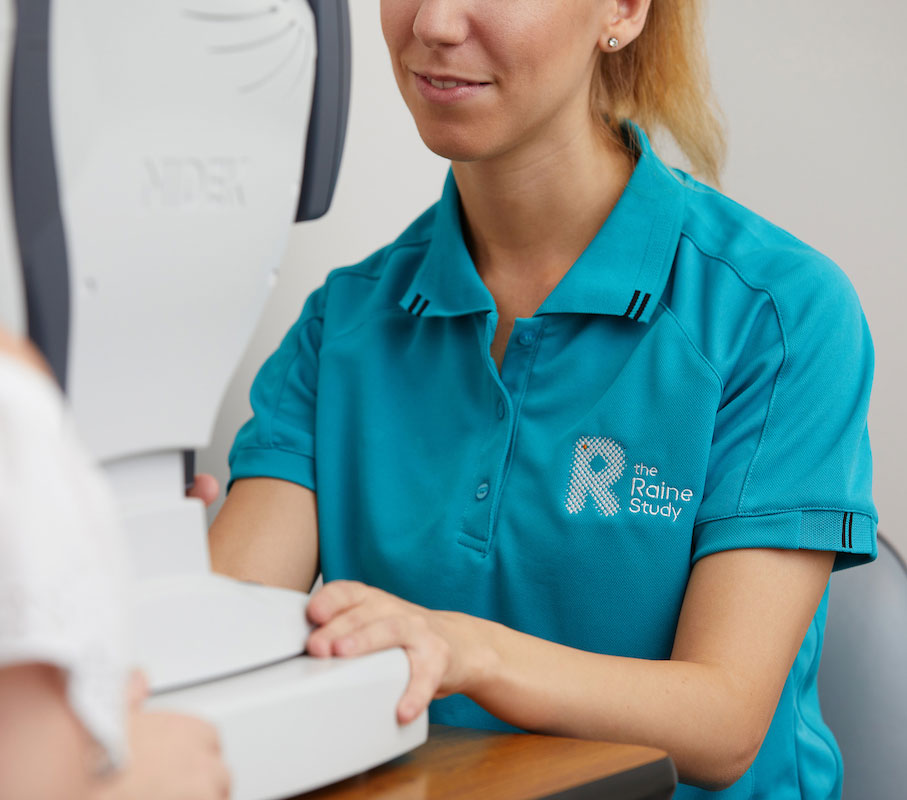Original Lancet paper
Effects of frequent ultrasound during pregnancy: a randomised controlled trial
Newnham JP, Evans SF, Michael CA, Stanley FJ, Landau LI. The Lancet, 1993.
This is the first publication from the Raine Study which is now the basis for international practice.
Abstract: Despite widespread application of ultrasound imaging and Doppler blood flow studies, the effects of their frequent and repeated use in pregnancy have not been evaluated in controlled trials. From 2834 women with single pregnancies at 16-20 weeks gestation, 1415 were selected at random to receive ultrasound imaging and continuous-wave Doppler flow studies at 18, 24, 28, 34, and 38 weeks gestation (the intensive group) and 1419 to receive single ultrasound imaging at 18 weeks (the regular group). Outcome data was obtained from 99% of women who entered the study. The only difference between the two groups was significantly higher intrauterine growth restriction in the intensive group, when expressed both as birthweight < 10th centile (relative risk 1.35; 95% confidence interval 1.09 to 1.67; p = 0.006) and birthweight < 3rd centile (relative risk 1.65; 95% confidence intervals 1.09 to 2.49; p = 0.020). While it is possible that this finding was a chance effect, it is also plausible that frequent exposure to ultrasound may have influenced fetal growth. Repeated prenatal ultrasound imaging and Doppler flow examinations should be restricted to those women to whom the information is likely to be of clinical benefit.
Cohort profile papers
Cohort Profile: Birth of a cohort – the first 20 years of the Raine study
McKnight CM, Newnham JP, Stanley FJ, Mountain JA, Landau LI, Beilin LJ, Puddey IB, Pennell CE, Mackey DA. Medical Journal of Australia, 2012.
This paper provides a great history of the Raine Study and reviews issues such as the original idea, funding, governance, participant loss, and ethics.
Abstract: In the beginning there was an idea … and funding. The project might never have started if not for a serendipitous meeting between an accountant for the Raine Medical Research Foundation and a young obstetrician.
Cohort Profile: Rationale, design and methods for the 22 year follow-up of the Western Australian Pregnancy Cohort (Raine) Study
Straker LM, Hall GL, Mountain J, Howie EK, White E, McArdle N, Eastwood PR; Raine Study 22 Year Follow-Up Investigator Group. BMC Public Health, 2015.
This paper serves as a reference for all studies using data from the Gen-2 followup at 22 years.
Abstract: Young adulthood is a critical life period for health and health behaviours. Related measurements collected before and after birth, and during childhood and adolescence can provide a life-course analysis of important factors that contribute to health and behaviour in young adulthood. The Western Australian Pregnancy Cohort (Raine) Study has collected a large number of such measurements during the fetal, perinatal, infancy, childhood and adolescence periods and plans to relate them to common health issues and behaviours in young adults, including spinal pain, asthma, sleep disorders, physical activity and sedentary behaviour and, work absenteeism and presenteeism. The aim of this paper is to describe the rationale, design and methods of the 22 year follow-up of the Raine Study cohort.
Cohort Profile: The Western Australian Pregnancy Cohort (Raine) Study-Generation 2
Straker L, Mountain J, Jacques A, White S, Smith A, Landau L, Stanley F, Newnham J, Pennell C, Eastwood P.Int J Epidemiology, 2017.
This paper provides an overview and reviews issues such as cohort representativeness, measurements, key findings and publications and data access.
Abstract: The conceptual framework for the study was initially based around the developmental origins of health and disease, but has since evolved into a life-course framework taking into account the multiple interacting domains of genetics, phenotypes (cardiometabolic, respiratory, immunological, hormonal, musculoskeletal, psychological, vision and hearing, body composition and growth), behaviours (physical activity, sedentary behaviour, sleep, diet, drug use, risk taking), the environment (sunlight, chemical exposures, spatial environment) and other developmental outcomes (education, work).
Cohort Profile: Western Australian pregnancy cohort (Raine) Study: Generation 1
Dontje M, Eastwood P, Straker L. Epidemology, 2019.
This paper provides an overview of our Gen1 Cohort.
Abstract: Until the 26-year follow-up of Generation 1 the focus of research within the Raine Study was on outcomes in Generation 2, with information on the parents mainly being used to examine its influence on their children’s outcomes. For example, recent findings showed that several characteristics of mothers, such as obesity, early mid-gestational weight gain and socioeconomic status were associated with non-alcoholic fatty liver disease, adiposity and cardiometabolic characteristics in offspring. Other findings showed that parents with back pain were more likely to have offspring who experienced back pain. Also, non-linear and dynamic relationships were found between maternal working hours and offspring overweight or obesity.
You can search all other publications using the Raine Study Data on our Publications page.

